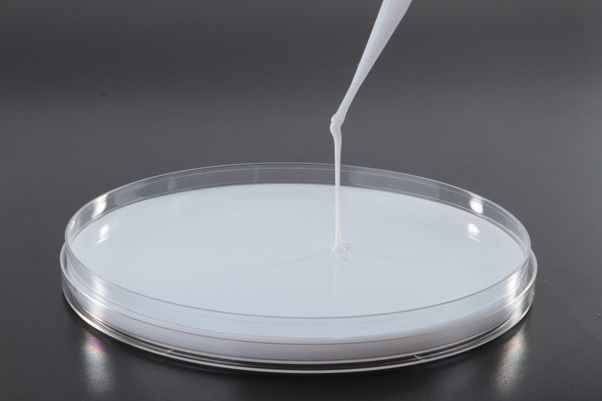Waterborne Two-Component Polyurethane Adhesive is a high-performance, eco-friendly adhesive that using water as the dispersion medium. It cures through a cross-linking reaction between Component A (waterborne polyol dispersion) and Component B (waterborne isocyanate curing agent). Its core advantages include low VOC emissions, non-toxicity, and retention of polyurethane’s inherent high strength and weather resistance. It is widely used in automotive interiors, woodworking/furniture, textile lamination, and electronics.
Waterborne Two-Component Polyurethane Adhesive
Waterborne Polyurethane (PU): Just as its name implies, it is a polyurethane that uses water as a dispersion medium.
Two-Component: two materials need to be mixed, in order to form a complete polyurethane structure.
Component 1 (Waterborne Polyol Resin): Contains hydroxyl (-OH) functional groups and is a water-dispersible polymer.
Component 2 (Water-Soluble Isocyanate Curing Agent): Reacts with the polyol resin to cure.
Reaction Mechanism: When mixed in water, the polyol resin and isocyanate curing agent undergo a chemical reaction to form a polyurethane network.
What is Waterborne Two-Component Polyurethane?
Dashboard/Door panel/center console: Bond soft surfaces like leather, PVC, and TPU with plastic (ABS, PP) or fiberboard substrates to obtain aesthetics and durability.
Seat/headrest: Composite fabric, sponge and framework material, ensuring long-term fatigue resistance and comfort.
Ceiling/carpet: Bond non-woven fabric, fiber mat to metal or plastic frames, which requires moisture and heat resistant, and anti-aging.
Sound insulation materials: Bond sound insulation cotton and damping sheets to reduce noise inside the vehicle.
Automobile interior
Single-component variants use waterborne polyurethane dispersions (PUDs).
Two-component systems combine hydroxyl-functional polyols with water-soluble isocyanate curing agents.
Applications: Two-component waterborne polyurethane coatings offer better abrasion resistance, chemical resistance, flexibility, etc., So It's widely used in industrial coatings, automotive coatings, wood coatings and other fields.
Difference between Single-Component Waterborne PU:
Shoe materials
Sole lamination: Bonding sole materials such as EVA, rubber, TPU to the upper (leather, mesh fabric), which must be resistant to repeated bending.
Upper fit: Precise bonding of multiple layers of materials (such as microfiber, hot melt film) ensures the stability of the shoe shape.
Decorative components: Fix logos, trim strips, etc., to prevent delamination and detachment.










